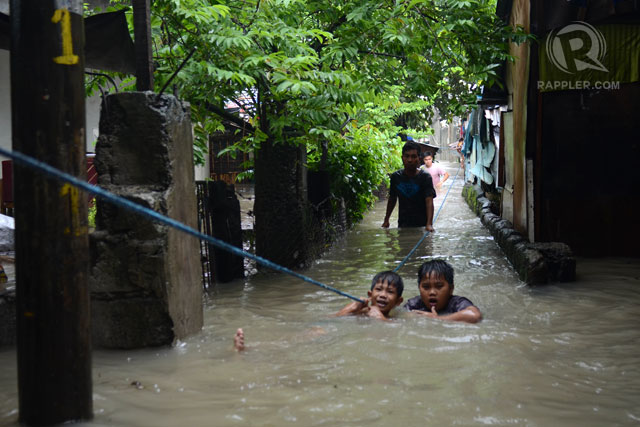SUMMARY
This is AI generated summarization, which may have errors. For context, always refer to the full article.

MANILA, Philippines — State weather bureau monitoring showed a month’s worth of rain poured in Cavite within 24 hours. This explains the heavy flooding in southern Luzon, which suffered the brunt of the “Maring”-enhanced southwest monsoon rains or Habagat.
The heaviest rainfall was recorded at Sangley point in Cavite, at 475.4 mm, according to PAGASA-NCR officer-in-charge Esperanza Cayanan. It is slightly more than the average worth of a month’s rain.
“The average rainfall for the month of August is 457.2 mm. This monsoon poured rainfall that is equivalent to a month. This is why we saw that southern Luzon suffered terrible flooding,” Cayanan said.
In comparison, up to 326 mm of rainfall was recorded at the area of the Ninoy Aquino International Airport in Pasay City within 24 hours. This is about 77% of a month’s worth of rainfall. Other parts of Manila recorded less amount of rainfall, Cayanan said.
Up to 60 percent of Metro Manila areas were flooded Tuesday 11 am but waters subsided later in the day. By 4 pm, flooded areas in the region were down to 20%, according to National Disaster Risk Reduction and Management Council (NDRRMC) chair Eduardo Del Rosario.
READ: The day Metro turned black
Red alert warning was raised early Tuesday after heavy to torrential rains were recorded in Metro Manila. It was downgraded to orange alert late afternoon.
READ: Monsoon continues Wednesday
Metropolitan Manila Development Authority Chairman Francis Tolentino himself was stranded in flooded EDSA-Magallanes on his way to the NDRRMC briefing Tuesday morning.
READ: 4 areas in Metro Manila under state of calamity
Habagat 2012, 2013
The monsoon rains have been compared to the destructive Habagat rains last year.
The difference, said Cayanan, is where heavy rainfall hit. In Habagat 2012, rainfall was heaviest in Metro Manila. In Habagat 2013, it is in south Luzon.
“Last year, heavy rainfall was recorded in northern Metro Manila. The Science Garden recorded less amount of rainfall this year than last year. This year, rainfall was concentrated in the southern portion of Metro Manila,” Cayanan explained.
Heavy to torrential rains continued Tuesday afternoon. PAGASA said gradual improvement of the weather is expected on Wednesday.
Heavy rains were continuous last year. This year, there were breaks, she noted.
Habagat 2013 also covered a bigger area, practically the entire Luzon, spanning from Laguna and Cavite in the South to some parts of northern Luzon. – Rappler.com
Add a comment
How does this make you feel?
There are no comments yet. Add your comment to start the conversation.